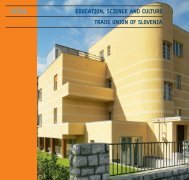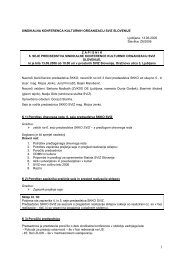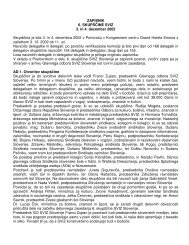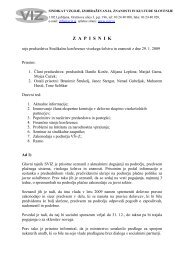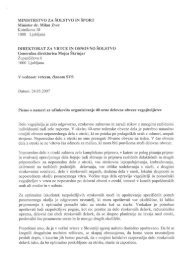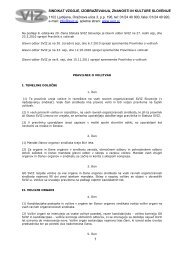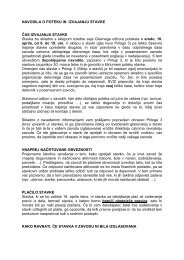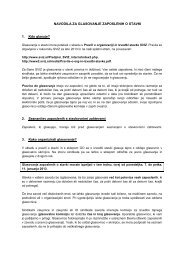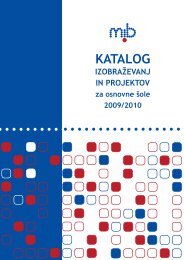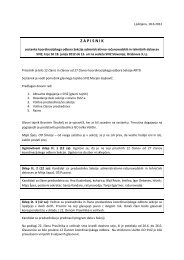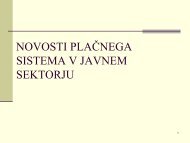You also want an ePaper? Increase the reach of your titles
YUMPU automatically turns print PDFs into web optimized ePapers that Google loves.
tov ter po francoski modi ukrojen plesni značaj stavkov. Sintezi je dodal še<br />
piko na i, ko je v suite vključil zbore pihal ter značilno angleško ljudsko in<br />
plesno glasbo (»Country Dances«), ki se navezujejo na tradicijo Purcella.<br />
PROGRAM / PROGRAM<br />
136<br />
Although the title ‘father of the symphony’, which we are fond of attributing<br />
to Joseph Haydn, may be somewhat exaggerated, there is no other<br />
instrumental genre in western music in which the creativity of one single<br />
composer is so extensive, so important in a musical-historical sense, or of<br />
such consistently high artistic quality. In the process of creating symphonies<br />
Haydn never settled on or stuck to one single model, but rather constantly<br />
developed the form and sought new formal solutions, in so doing also modifying<br />
his symphonic style.<br />
Before gaining employment with Esterhazy, Haydn wrote several symphonies<br />
for Count Morzin. The corpus of the earliest symphonies were most frequently<br />
orchestrated for two oboes, two horns and strings, and had a three-movement<br />
form in the classical fast-slow-fast configuration. However, even the first<br />
symphonies demonstrate a difference between the more solemn first movement<br />
and the fast final movement, while the central movement is somewhat<br />
slower and ‘lighter’ in character. Thus in the first symphonies Haydn interwove<br />
the Austrian and the Italian, the serious and the light, the traditional<br />
and the modern. Symphony No. 1, as the composer himself numbered the D<br />
Major symphony, even begins with the so-called Mannheim crescendo, an<br />
innovation of the Mannheim School in which a sudden crescendo appears<br />
in the entire orchestra. According to the year in which it was written (1759), it<br />
is not, in fact, Haydn’s earliest symphony; this honour belongs to Symphony<br />
No. 18. Although the First Symphony and the other early symphonies differ<br />
greatly from the later symphonies, these symphonic beginnings of Haydn<br />
are nonetheless little masterpieces in their own right.<br />
Wolfgang Amadeus Mozart composed for the violin most intensively in<br />
the period from 1771 to 1775 in Salzburg, when he was a concertmaster in<br />
the service of Archbishop Colloredo. An additional impulse for writing violin<br />
concertos was provided by his third journey to Italy, from July to September<br />
1773, during which time he made the acquaintance of numerous excellent<br />
violinists and violin composers. Concertante music for the violin was blossoming<br />
in Salzburg at the time, and so it is no wonder that in addition to<br />
the five violin concertos from this period we also find numerous individual<br />
movements for the instrument, as well as concertante violin interludes in<br />
various serenades and divertimentos. Although there were many excellent<br />
violinists amongst the members of the court chapel, as well as in the ranks<br />
of amateurs, it is not known for which specific occasions and/or performers<br />
Mozart actually wrote his concertos. The first was most likely written in 1773<br />
and the others in 1775. However, in Mozart’s time and well into the 19 th century<br />
his violin concertos were less known and more narrowly disseminated<br />
than his piano concertos.



